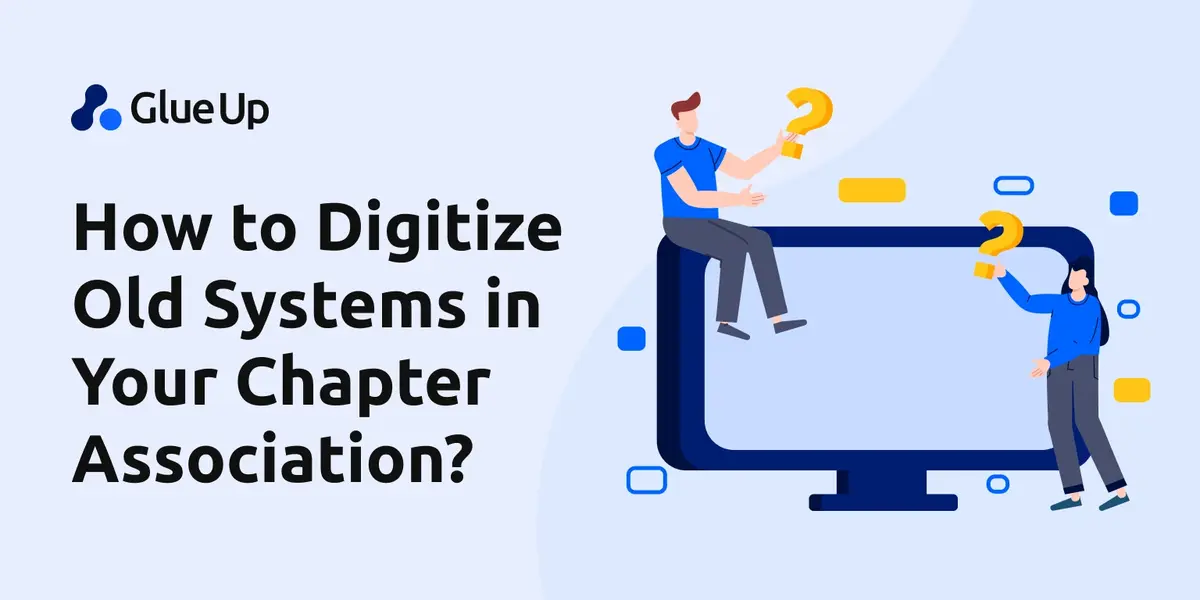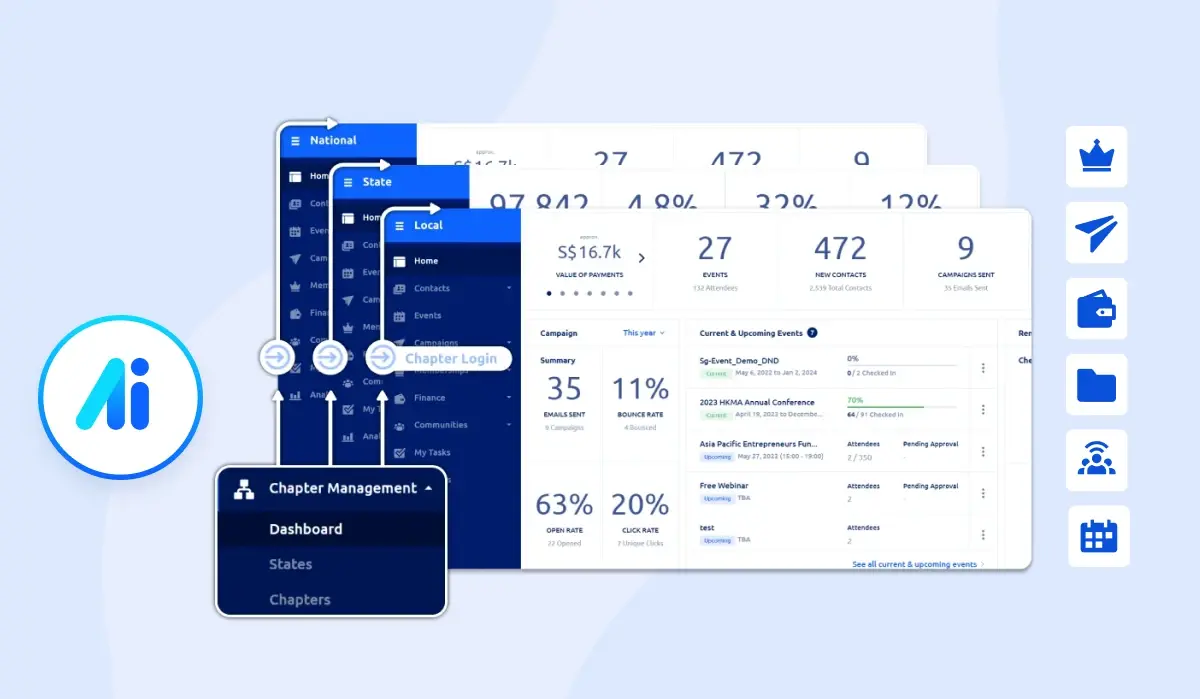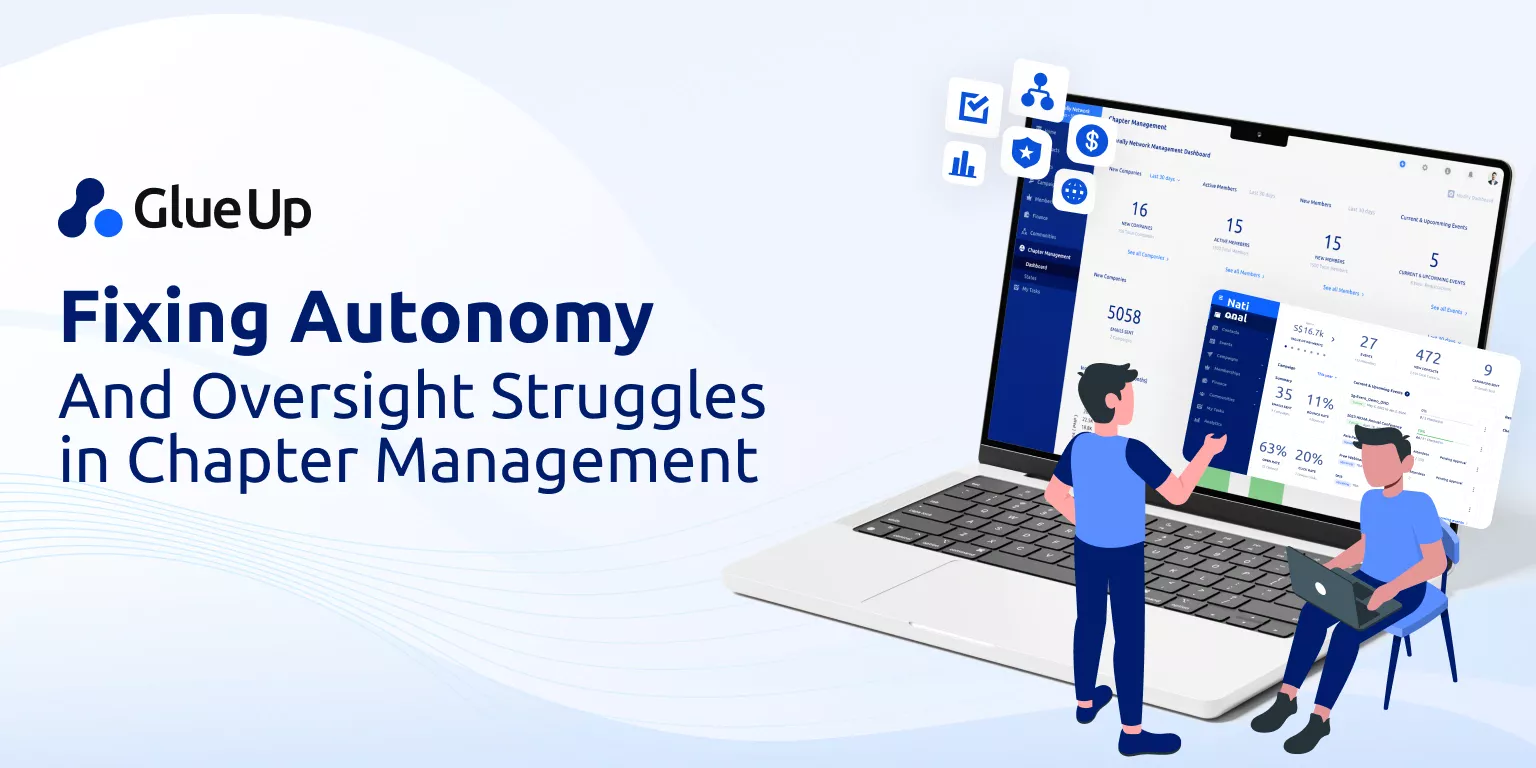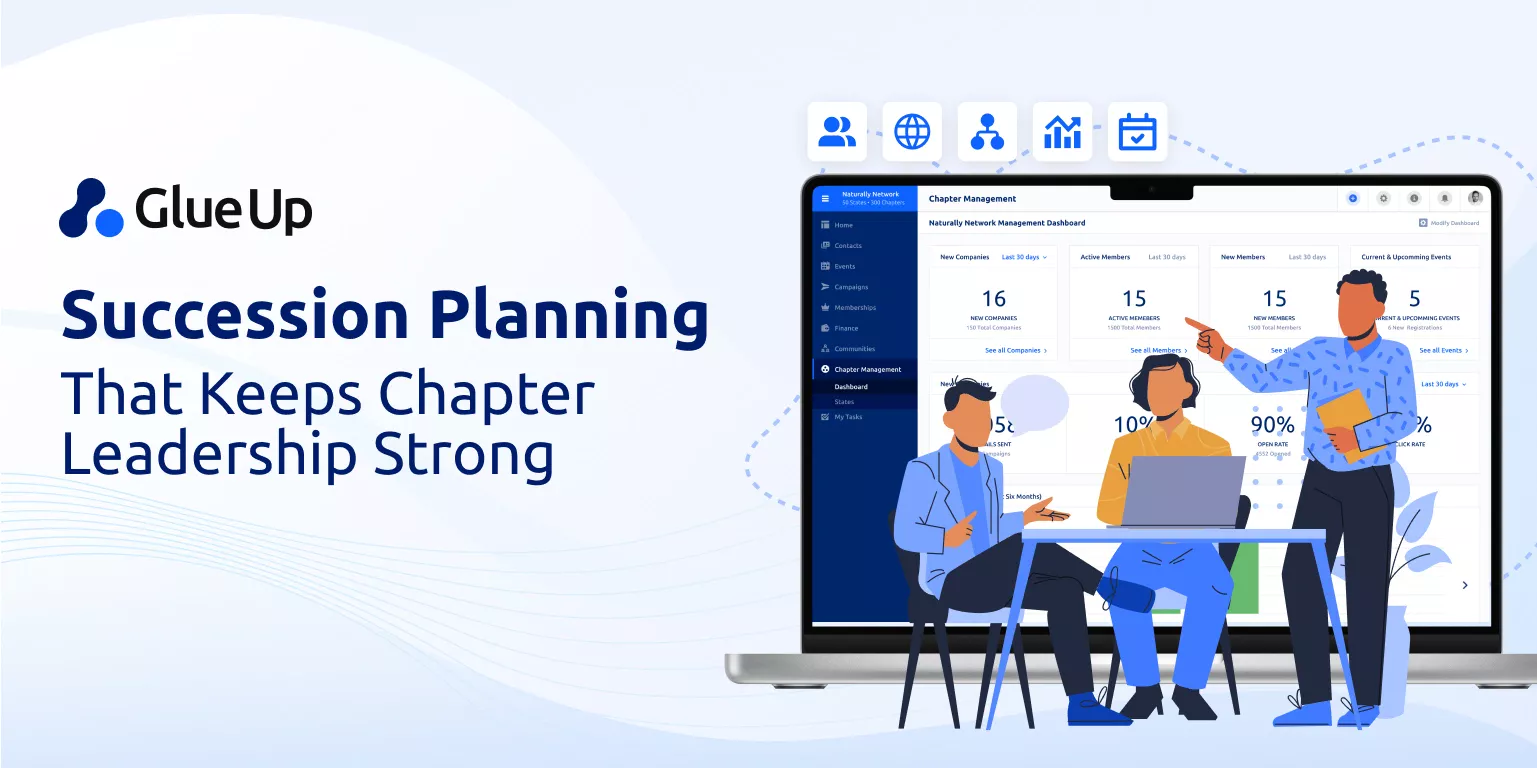
Last Updated: May 15, 2024
In the new world of technology, digital transformation has become a necessary step for businesses and organizations to remain competitive and relevant. The same holds true for multi-chapter organizations.
Digitization of chapter management processes and systems can improve efficiency, reduce costs, enhance member engagement and experience.
In this article, we will explore how multi-chapter associations can digitize their old systems and modernize their platforms by embracing digital transformation and leaving their old systems behind.
If you’re unsure about where you are in the digital transformation process or feel that you need more information on what it means for your organization, be sure to check out our 16-step roadmap for digital transformation.
Key Takeaways
- The first step towards successful digitization is to identify outdated systems, manual processes, and disjointed workflows that hinder the organization's growth and performance. Prioritize these areas based on their impact on the association.
- Gather input from members and stakeholders to determine the essential features and functionalities needed in the new digital system, such as event management, communication tools, member portals, and member management.
- Choose a vendor with a proven track record of delivering solutions to similar organizations. Evaluate their capabilities, experience, and support services to ensure they can meet your association's specific needs.
- Migrate to a modern, flexible, and scalable platform that integrates with existing tools and systems. Optimize processes and workflows to align with the new system, and provide training to staff to ensure effective adoption.
- Communicate the benefits of the new system to members and stakeholders, manage expectations, and provide ongoing training and support. A well-executed change management plan is crucial for a smooth and successful transition to the new digital system.
Step 1: Assess Existing Systems and Processes
The first step towards digitization is to assess the current systems and processes in place.
Chapter-based organizations should identify outdated systems that are hindering the organization's growth and performance.
This could be in the form of manual processes, outdated software, or disjointed systems. Once these systems have been identified, it is important to prioritize them based on their impact on the organization.
Step 2: Identify New System Requirements
The next step is to identify the requirements for the new system.
Chapter-based organizations should assess their needs and requirements and seek input from members and stakeholders to ensure that the new system meets their needs.
This could include features such as event management, communication tools, member portals, and member management.
Step 3: Find The Right Software

Once the requirements have been identified, multi-chapter associations can then explore different platforms and solutions that can meet their needs. This could involve selecting a vendor or working with an internal IT team to develop a custom solution.
When selecting a vendor, it is important to evaluate their capabilities, experience, and support services. The vendor should have a proven track record of delivering similar solutions to other organizations.
Glue Up’s multi-chapter management software, for example, provides an entire ecosystem of different tools that manage members, chapters, events, and internal operations.
Step 4: Platform Modernization
Multi-chapter organizations should also consider platform modernization. This involves migrating to a new platform that is more modern, flexible, and scalable.
The new platform should be able to integrate with other systems and tools that the chapter organization uses. This can improve the organization's ability to manage data and analytics, provide better member experiences, and streamline processes.
Transforming solutions involves more than just implementing new technology. Chapter associations should also evaluate their processes and workflows to ensure that they are optimized for the new system.
This could involve simplifying processes, automating tasks, and retraining staff to ensure that they can effectively use the new system.
Step 5: Develop a Change Management Plan
Finally, chapter associations should also develop a change management plan to ensure that the transition to the new system is smooth and successful.
This involves communicating the benefits of the new system to members and stakeholders, providing training and support, and managing expectations.
---------------------------------------------------------------------------------------------------------------------------------------
In conclusion, technology transformation and digitization are crucial for multi-chapter associations to remain relevant and competitive.
By identifying outdated systems, assessing requirements, selecting a vendor, modernizing platforms, and transforming solutions, chapter associations can improve efficiency, reduce costs, and enhance member engagement.
The key to success is to develop a comprehensive plan that includes all aspects of the transformation process, including change management.
FAQs
1. What are the benefits of digitizing old systems for multi-chapter associations?
Digitizing old systems can help multi-chapter associations streamline operations, improve data accuracy, enhance member experience, and reduce manual workload. By embracing modern technology, associations can become more agile, efficient, and competitive in today's digital landscape.
2. How can multi-chapter associations ensure a smooth transition to new digital systems?
To ensure a smooth transition, associations should develop a comprehensive change management plan. This includes communicating the benefits of the new system to stakeholders, providing adequate training and support, setting realistic expectations, and continuously monitoring and addressing any issues that arise during the implementation process.
3. What factors should multi-chapter associations consider when selecting a software vendor for digitization?
When choosing a software vendor, multi-chapter associations should consider factors such as the vendor's experience working with similar organizations, their track record of successful implementations, the scalability and flexibility of their solutions, the level of customer support provided, and the overall cost of implementation and maintenance.
4. How can digitization help multi-chapter associations improve member engagement?
Digitization can help multi-chapter associations improve member engagement by providing a centralized platform for communication, collaboration, and resource sharing.
A member portal, online event registration, and personalized content delivery can help associations provide their members with a more engaging and valuable experience.
5. What are some common challenges multi-chapter associations face during the digitization process, and how can they be overcome?
Common challenges during digitization include resistance to change from staff and members, data migration and integration issues, and budget constraints.
To overcome these challenges, associations should prioritize clear communication, involve key stakeholders in the decision-making process, allocate sufficient resources for training and support, and set realistic timelines for implementation.
Partnering with an experienced software vendor can also help mitigate risks and ensure a successful transition.



